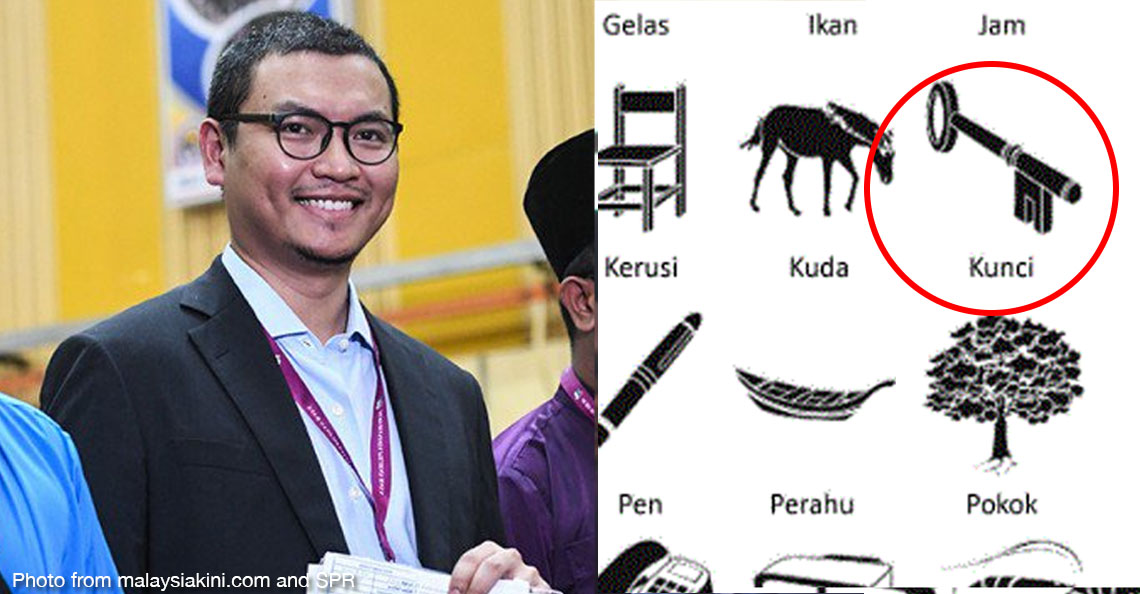Malaysia is cleaning the Port Dickson oil spill with diaper material. And it’s effective
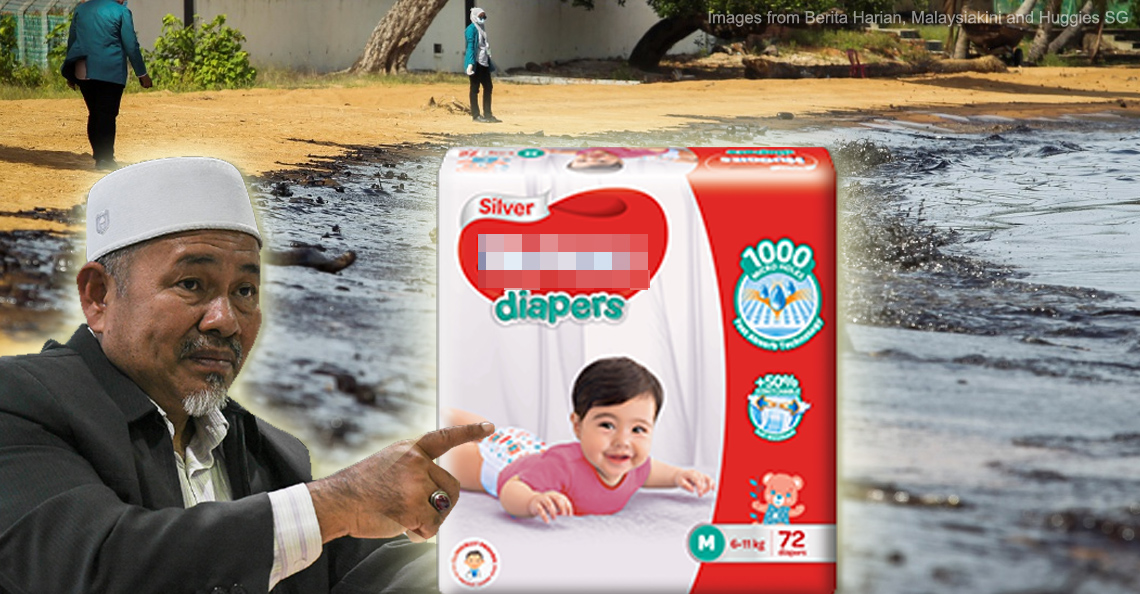
- 305Shares
- Facebook296
- Twitter2
- LinkedIn1
- WhatsApp6
While the peeps in Selangor were busy stocking and restocking our water supplies, our friends in Port Dickson are facing a slightly different water issue – an oil spill.
Ok la, they’re not really facing water interruption issues but just recently, about 2km (or 3km in some news reports) of Pantai Cermin, Port Dickson up to Melaka was polluted by a mysterious oil spill. Nobody knew who did it and it was just there one day, which may be why the news first came about from a viral Facebook video.
This may also be why, according to Environment and Water Minister, Tuan Ibrahim Tuan Man, his ministry is currently investigating the case to find the culprit behind the spill.
“This case is being investigated under Section 27 of the Environment Quality Act 1974 that carries a maximum fine of RM500,000 or a maximum five-year jail term or both,” he said in a statement Tuesday (Oct 13).” – Tuan Ibrahim, as quoted by The Star.
But in the meantime, the Environment Department (DOE) along with 10 other govt agencies, are working together to clean up the beach.
And it is so intriguing (for us la, at least) to find out that…
Our govt agencies cleaned oil spills using…

Ok ok, the team didn’t actually use literal diapers to clean up the beach la. However, what we meant by this is that the cleanup team used a diaper-like material to trap the oil spill.
According to the Director of the Security and Environment Security Division of the Malaysian Marine Department, Mohd Fairos Rozali, this method is known as the absorbent boom and it was used because the team was cleaning up the bay.
“Therefore, we need to use the ‘absorbent boom’ to trap oil around the bay area which is the location of the main incident of the oil spill believed to be from the ship.” – Fairos, as quoted by Berita Harian. Translated from BM.
See, what an absorbent boom does is to prevent the oil from spreading to other areas and absorb (duh, the name says it all) oil. Think of it like taking the insides of diapers and rolling them into strips. But the materials used for these booms are rolled to become these super huge and long tubes…
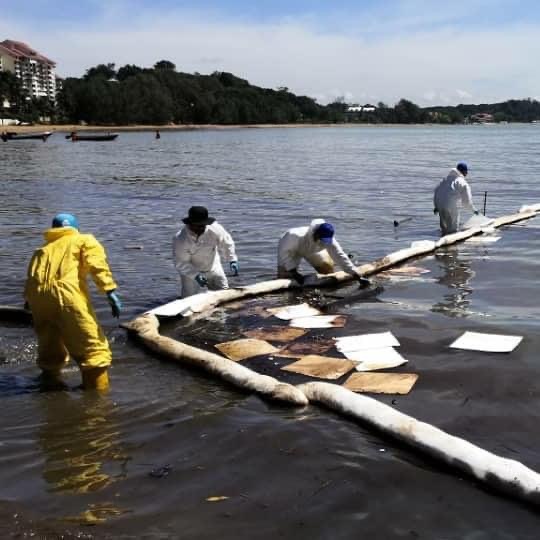
Besides absorbent booms, the cleanup team also used absorbent pads to absorb a huge amount of oil from the water, according to Fairos, leaving only a thin layer of oil that cannot be absorbed by these tools.
So, what happens to the remaining oil in the water?
Workers would clean it the hard way – with their hands
Fairos also mentioned that once the oil spill is dealt with the aforementioned booms and pads, the cleanup team would be cleaning up remaining oil MANUALLY. And when we say manually, we mean… by hand.
“A lot of rubbish is stuck in the mangrove swamp and has been removed. We only had to work with the agencies to clean the oil stains on rocks and mangrove trees manually despite time constraints because it can only be done when the water recedes and depending on the weather.” – Fairos, as quoted by Berita Harian. Translated from BM.
While this is just part of what it means to clean up oil spills manually, most of the time it means that you use hand-held tools like hands (yea, literally), rakes and shovels, among other tools.

And, surprisingly, it seems like this has been a go-to method to handle oil spill incidents in Malaysia since… 1992 when the Nagasaki Spirit collided with a container ship, The Ocean Blessing, in the Malacca Straits. This method was used again in 2017 when a container ship, APL Denver collided with another container ship in Pasir Gudang.
One reason why this method was used in these incidents is because the amount of area affected by the oil spill from the incidents weren’t that huge and the oil spills are still manageable manually. Having said that, there are plenty other ways to handle oil spills such as…
- Skimmers – functions like a vacuum cleaner to suck oil out of water,
- Burning in-situ – literally burning the oil on the water (err… not really eco-friendly la),
- Dispersants – using chemicals to break up the oil. Malaysia sometimes uses this and even has a guideline for it,
- Hot water and pressure washing – removing oil by using hot pressurised water,
- Bioremediation – using other microorganisms to ‘eat’ up the oil,
- …or just wait for it to degrade itself lo
But authorities would normally look into several factors like the location of oil spills, the ecosystem in the area and weather conditions before deciding which method or combo of methods are suitable to be used to clean up oil spills. In Malaysia’s guideline to use dispersant for this purpose, there’s even a flow chart on this:

Malaysia even has a National Contingency Plan to combat oil spills in the Strait of Malacca, East Coast, Sabah and Sarawak. It is divided into two tiers – Tier 1 for small spill and Tier 2 for spill extended beyond port limits – depending on the amount of spill and local authorities’ capabilities in dealing with the spill.
But even with all these methods, you might be wondering…
Can oil be completely removed from the ocean?
TLDR: Nope. 🙁
According to a Biology Oceanographer in Louisiana Universities Marine Consortium, Nancy Rabalais, you can’t really remove oil from water. She said this based on the 2010 explosion that caused millions of gallons of oil spilling into the Gulf of Mexico.
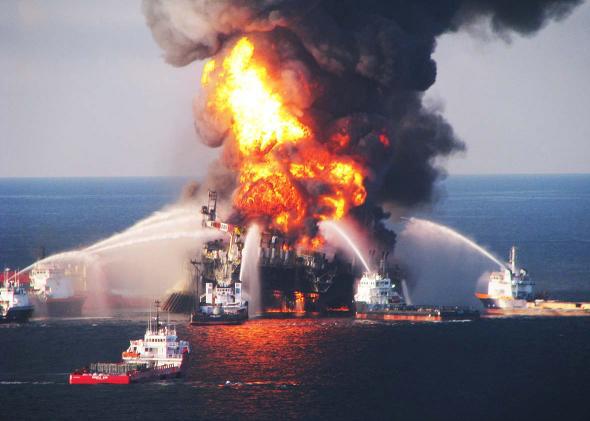
The reason being even when oil is removed from the surface of water, it may have already degraded and penetrated into marine habitats. And when this happens, it may be really difficult to remove the oil.
“Eventually, oil does degrade. The toxic fractions are removed through natural processes, oxidation and photodegradation and things like that, microbial decomposition. It’s just that it’s not something that’s going to go away overnight, for sure, or even in a couple of years.” – Nancy, as quoted by EarthSky.
Besides that, it may not be as easy as removing oil stains from your mother’s Tupperwares because you gotta consider how the ocean is huge and it could be really easy for oil spills to travel anywhere. So, it would take a lot of countries to be involved to clean up an oil spill.
For instance, in the 2017 APL Denver collision (that we mentioned earlier), Malaysia had worked together with Singapore to clean up the oil spills in the Straits of Johor. Just in case you didn’t know, Malaysia’s Marine Department and the Port Authority of Singapore have been carrying out chemical spill exercises to test the Joint Emergency Response Plan since 2014.

In fact, Malaysia and other ASEAN countries have signed a Memorandum of Understanding (MoU) on the Mechanism for Joint Oil Spill Preparedness and Response (MoU-ASEAN OSPAR). This memorandum establishes a strategic cooperation between ASEAN countries to combat oil spills at sea.
But even so…
It may be hard to detect exactly who spills the tea oil
In a report on Malaysia’s coastal and marine resources, our country is said to have experienced about 18 major oil spill incidents. And while we’ve highlighted accidents as the cause of these spills, a study by researchers from Universiti Kuala Lumpur pointed out that the main cause of this would be oil discharged from ships.
You may have already known how busy the Straits of Malacca is with some famous ports like Port Klang, where roughly 586 ships travel to and from(based on our rough calculations la), carrying 12.32 million twenty-foot equivalent units (aka those containers you see at ports). And in ports like this, you’d find that oil discharge is unavoidable because ship maintenance would involve the process of pumping out waste from the ships.
Heck, one ship could generate about 150,000 tonnes of oil waste(!). So, one could only imagine how many tonnes of oil are released into the sea on a daily basis.
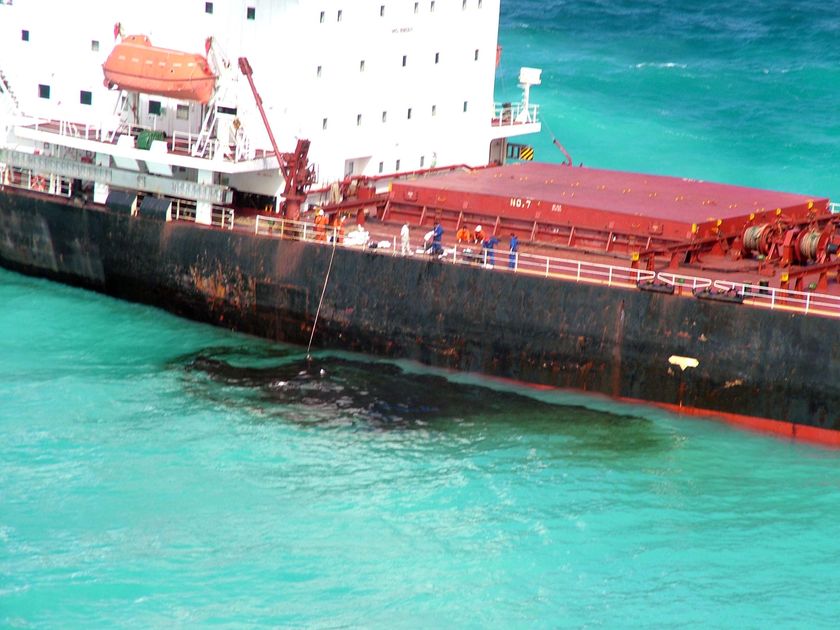
Having said that, this may be what happened at Port Dickson la. As of now, 80% of Port Dickson’s 2km shoreline that was polluted have been cleaned up. And the DoE has collected 12 oil samples from the spill for further investigation because, according to its director, it may not be easy to find the culprit anyways.
“Oil dumping at sea is hard to detect because by the time it takes for the oil to reach the beach or for it to be detected by enforcement agencies, the perpetrators would have fled or covered up their act.” – Norlin to BERNAMA, as quoted by The Edge Markets.
And she may be right considering how the DoE can only tell who did this within the next two months when the sample results come in.
At the end of the day, you may be wondering if the problem with oil spills would end anytime soon? Well, it’s hard to tell as of now but looking at the current situation, we kinda doubt so.
- 305Shares
- Facebook296
- Twitter2
- LinkedIn1
- WhatsApp6



